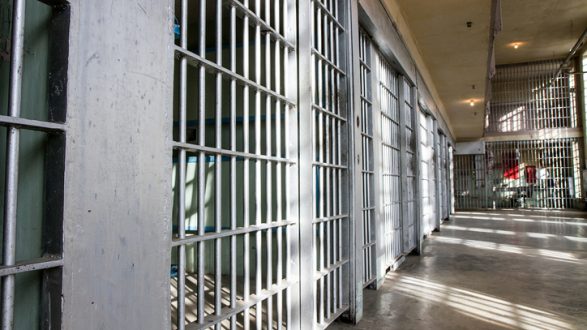
 txking/iStock(WASHINGTON) — The first spate of federal executions announced by the attorney general would quickly more than double the number of such executions in modern U.S. history.
txking/iStock(WASHINGTON) — The first spate of federal executions announced by the attorney general would quickly more than double the number of such executions in modern U.S. history.
There had only ever been three federal executions since the death penalty was reinstated by the Supreme Court in 1976, with the most infamous among them that of Oklahoma City bomber Timothy McVeigh.
On Thursday, the Department of Justice announced it will restart executions in federal cases, and it listed the first five executions that will be performed in December 2019 and January 2020.
The Department of Justice statement concludes by noting that “additional executions will be scheduled at a later date.”
Aside from those five, there are 57 people remaining on federal death row, according to data collected by the non-profit Death Penalty Information Center.
That number accounts for people who were sentenced to death in federal cases as opposed to in state courts cases. It is a fraction of the total death row cases on the state level, as the Death Penalty Information Center reports that as of April 1, there were 2,673 death row prisoners in state facilities nationally.
That discrepancy suggests the decision to restart federal executions is a political one, according to Evan Mandery, a professor at the John Jay College for Criminal Justice.
“What would be the public policy benefits by seeking the executions of five people? What’s the deterrence of that?” Mandery, who is an expert on the death penalty, told ABC News.
“There’s no public policy justification for it whatsoever and it’s almost certainly going to amount to a symbolic act,” he said. As a result, Mandery views the change to be “a characteristic pandering to the most conservative base.”
By contrast, Attorney General Bill Barr framed the move as a matter of upholding existing law.
“Congress has expressly authorized the death penalty through legislation adopted by the people’s representatives in both houses of Congress and signed by the President,” Barr said in the statement.
“The Justice Department upholds the rule of law — and we owe it to the victims and their families to carry forward the sentence imposed by our justice system,” he said.
The past cases
The highest-profile federal execution to date is undoubtedly that of McVeigh, who was convicted on 11 counts of a federal indictment connected to the Oklahoma City Bombing in 1995, which killed 168 people. McVeigh was sentenced to death and was executed on June 11, 2001.
Eight days after McVeigh was executed at the penitentiary in Terre Haute, Indiana, that is home to federal death row, Juan Garza, who was convicted for the killings of three men, was executed on June 19, 2001.
The third and last person to be federally executed was Louis Jones in 2003, after being convicted of raping and killing a female soldier. The victim, Tracie McBride, was kidnapped on a Texas Army base.
The announced first string of cases
The five cases selected by the Department of Justice to be the first to resume federal executions vary both in terms of the cases themselves and the dates and locations of the respective crimes.
They include a member of a white supremacist group who murdered a family of three in Arkansas and was sentenced in 1999, a man who murdered a woman and her granddaughter in Arizona and was sentenced in 2003, a man who raped and murdered a teen in Missouri and was sentenced in 2003, a man who tortured and murdered his toddler daughter in Texas and was sentenced in 2004, and a man who shot and killed five in Iowa and was sentenced in 2004.
The announcement does seem to suggest a common determining theme, noting that they are inmates “convicted of murdering, and in some cases torturing and raping, the most vulnerable in our society — children and the elderly.” That said, it doesn’t make any suggestions that subsequent cases will follow the same theme.
One other important consistency that exists between the five cases comes at the end of the statement: “Each of these inmates has exhausted their appellate and post-conviction remedies, and currently no legal impediments prevent their executions.”
Possible future cases
The two most infamous criminals listed on federal death row are the Charleston church shooter and Boston Marathon bomber.
Dylann Roof, who killed nine black churchgoers during a Bible study in Charleston on June 17, 2015, was sentenced to death in 2017.
Roof’s sentencing was the first time a death penalty verdict was rendered in a federal hate crimes case.
Before the killings, Roof’s racist hatred built up for years, Assistant U.S. Attorney Jay Richardson told the federal jury, according to ABC Charleston affiliate WCIV. Roof scouted the Emanuel AME Church months before, Richardson said. After buying the murder weapon with his birthday money, Roof bought enough magazines to have 88 rounds, which had racist symbolism, Richardson said, linked to Hitler.
Another infamous criminal convicted in federal court was Boston Marathon bomber Dzhokhar Tsarnaev, who was sentenced to death in 2015.
On April 15, 2013, three people were killed, including an 8-year-old boy, and another 260 were injured when Tsarnaev and his older brother, Tamerlan Tsarnaev, detonated explosives near the marathon’s finish line. Three days later, during a city-wide search, the brothers murdered MIT police officer Sean Collier. Tamerlan Tsarnaev was later killed in a shootout with police.
Then-Attorney General Loretta Lynch said in 2015: “Dzhokhar Tsarnaev coldly and callously perpetrated a terrorist attack… the ultimate penalty is a fitting punishment for this horrific crime.”
As of yet, however, the attorney general has not indicated who would be given future federal executions.
Copyright © 2019, ABC Radio. All rights reserved.










